Which “aircraft” was 35 ft long, inducted in 1964, could fly at three times the speed of sound, had no wings and was inducted in huge numbers? It was the IAF’s first Sufrace to Air Guided Weapon – the S-75 Dvina missile system [NATO : SA-2 Guideline]. The history of the Dvina in IAF service was (and still is) obscured and obfuscated for years. For the first time, an attempt is made to trace its origins and its service till 1992.
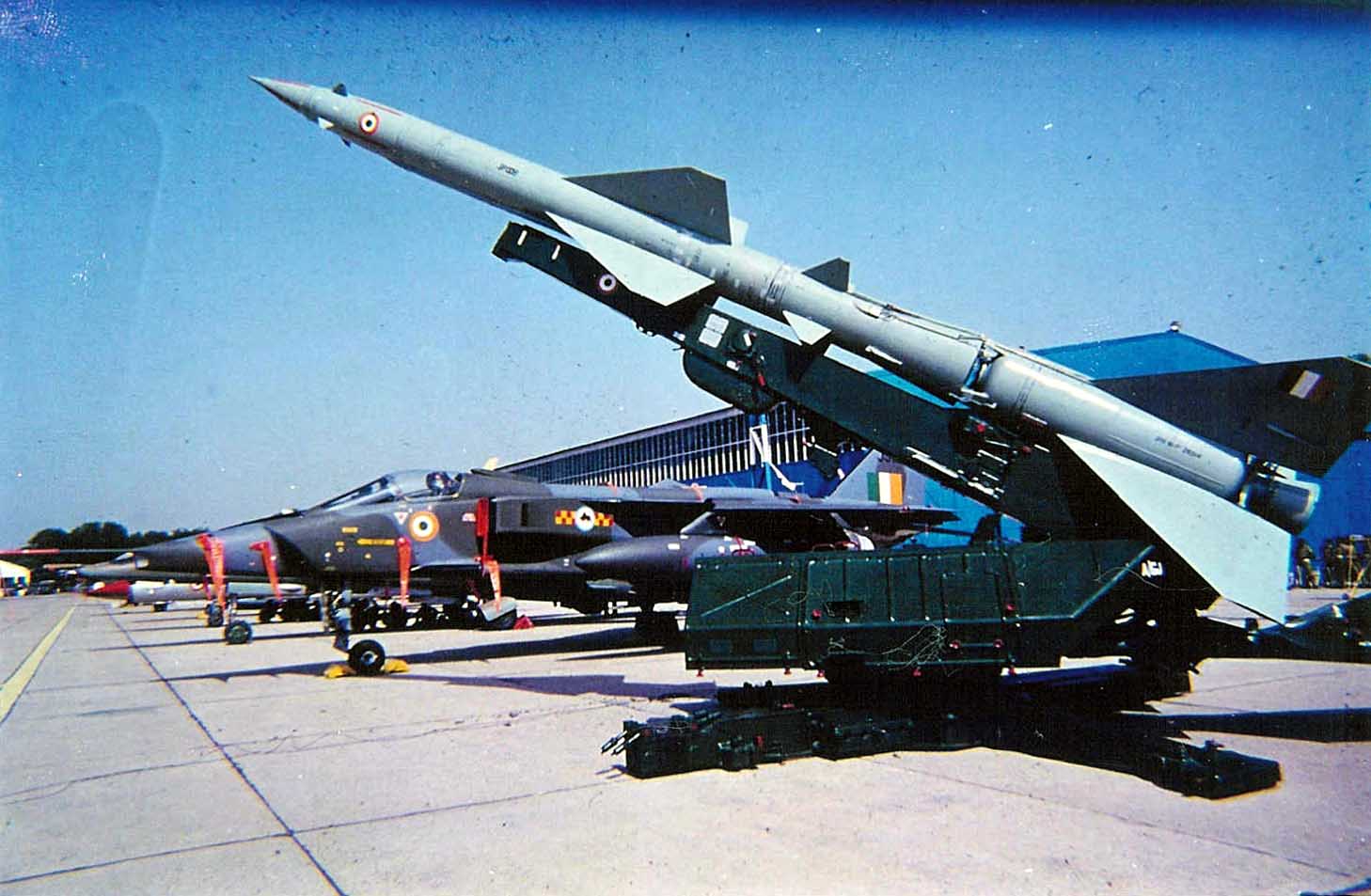
The S-75 Dvina / SA-2 SAGW Launcher and Missile on display at Palam during an Air Force Day Parade.
The S-75 Dvina / SA-2 in the Indian Air Force (1965 – 1992)
Background
Development of rocketry was accelerated during the cold war with both the USA and Soviet Union competing to build next generation rockets. In India, before 1962, air defence below 5000 feet altitude was solely the responsibility of the Indian Army. However, in the wake of the 1962 Chinese aggression and improving air defence capabilities of the PAF, the need for better air defence coverage was felt. As a result, India acquired the S-75 Dvina system (NATO Codename: SA-2 Guideline) missiles from the Soviet Union, apart from other hardware such as the Mig-21’s and the P-35 Radar. After much discussion between the various arms of the forces, the new missiles were handed over to the IAF. The deal was for three missile units totalling US$ 112 million in cost and included 18 launchers and 102 missiles.
Technical Description
The Soviet S-75 Dvina [Nato SA-2 Guideline] was the most important tactical missile system of the cold war. It was originally developed for the strategic defence of Soviet cities against US and British bombers. Inducted in 1959, It was first used in combat in late 1950s and early 1960s against the US U-2 spy planes over Russia, China and Cuba. It was the SA-2 missile that caused the loss of the U-2 piloted by Gary Powers in May 1962.
The Soviet Union started exporting the missile system and as a result it played pivotal roles in the air wars over Vietnam (1966-73), and in the Middle East in 1967,1970 and 1973. Although increasingly obsolete, the widespread export of the S-75 ensured that it was used in many other conflicts during the 1980s and 1990s. [1]
The SA-2 system consists of the V-750 missile – a two-stage surface to air guided weapon. The missile’s powerplant comprised one liquid-propellant and one-in-line solid propellant booster fitted with large cruciform fins. The control surfaces were on the trailing edge of the two fins and guidance was by automatic radio command. The target aircraft was tracked by radar which feeds signals to a computer which works out guidance signals necessary to detonate the missile’s high-explosive warheads when at closest point to target. The missile was designed to engage targets between the range of 7km to 40km, and could be fired at targets upto 88,000 feet. The minimum altitude to engage varied, with latter variants able to engage low flying targets flying at 500 feet AGL[2].
A description of the system for the Australian Air Power Site [3]explains the workings of the S-75 system
A single S-75 battery was made up of six SM-90 launchers clustered around a single RSNA/SNR-75 Fan Song engagement radar. The Fan Song could control up to two missile rounds concurrently against a single target. Cables were used to connect the launchers to the Fan Song radar.The Fan Song used a pair of fixed trough antennas mounted on a single towed trailer, with a third dish antenna for the missile command uplink. A Fan Song would produce two fan shaped “flapping” beams, one for azimuth tracking, the other for elevation tracking, both of the target and a beacon in the tail of the missile.
The deployment of a battery of these launchers required fixed sites – which involved the Air Force to acquire land and turn them into permanent mini stations.. The S-75 batteries were arranged in a typical circular pattern, with the Fang Song radar mounted on a permanent ramp in the centre and the six launchers around it facing outward. The facility had to accommodate electrical generator vans as well as operator and electronics vans suitably protected from potential air attacks. Cabling needed to be laid out between the launchers and the Fang Song radar . And adequate distance had to be maintained between the launchers , the radar and the control vans. Revetments and berms were needed to provide protection against the blast and debris resulting from the missile launches.

SA-2 launcher and missile in India[4]
Acquisition
India conducted negotiations with the Soviet Union in which Russia agreed to supply the Indians with enough SA-2 equipment for 17 firing battalions. 4 technical support battalions and one training battalion. Indian defence plans called for the following deployment of SA-2 SAM sites: 5 firing and one tech support in the Chandigarh-Ambala area, six firing and two tech support at Calcutta, six firing and one tech support at New Delhi and one training and one tech support at Baroda.
Equipment for the Baroda training site probably arrived aboard the Nicholai Pirogov which was docked at Bombay from 7 January to at least 26 January 1964. Training was to begin at this site in April 1964[5]. By 1st October 1965, the Soviet Union had delivered 144 SA-2 missiles – 72 of which were deployed with forward squadrons and 72 kept in storage at Rajokri[6]. It should be noted that it was just over five years since the system was inducted within the Soviet Union,
Subsequent shipments after the 1965 conflict boosted the strength of the SAGW (Surface to Air Guided Weapons) units by an additional 8 squadrons, totalling to 48 launchers and 75 missiles, all of which were delivered between 1968-1972. [7]
Induction
The first S-75/SA-2s to arrive in India were believed to have been shipped by sea around December 1963. Soviet engineers being on hand to help unload, transport and store the weapons[8]. The first order was believed to have been enough to equip eight SAM Units, totalling 48 launchers and 75 missiles. Each squadron had 6 launchers, missile transporters and electronics and related hardware. Most of the SA-2 deployments were fixed site, except for one.
The IAF decided to designate the missile units as squadrons and proceeded to issue squadron numbers that fell in sequence to the flying unit squadron numbers. The official term of the IAF for these units was “Surface to Air Guided Weapons” Unit. To plan and manage their induction, a Director of SAGWs was appointed at Air HQ.
The first SA-2 Unit in the IAF order of battle is believed to be No.34 Squadron, which was designated as a “Training Squadron”. The distinction of being the first operational Surface-to-Air Guided Weapon (SAGW) unit went to No 46 Squadron, which was raised by then Wg Cdr M L Sethi (4009 F(N)). Sethi was one of the first batch of IAF personnel who was sent to train in the Soviet Union that formed the original pioneers of the Surface to Air Guided Weapons Cadre of the IAF. A new technical cadre under the Directorate of Guided Weapons was established and officers from various branches were trained to actively manage the squadrons. The command of operational squadrons was given to an officer of the flying branch and the technical squadrons from the tech branch.
All the squadrons were given a common ‘badge’ (aka Crest) – the emblem consisting of a vertical Arrow surrounded by fire and lightning – a nod to the awe-inspiring sight of the SA-2 missile being launched and flying through the air. The common motto for these squadrons was “SangrameJayata Shure” (Only the Brave will win the war) .[9]

The S-75/SA-2 missile on a transporter as displayed at the Republic Day Parade in1968 in New Delhi, Probably the earliest photograph of the SA-2 related to Indian service. Photo Courtesy : Dr Shiv Sastry

This SA-2 missile and the tractor-trailer was displayed two years later in 1970. (Pic Courtesy : Indian Air Force)
Over the years, 24+ SA-2 Squadrons were raised, and there were at least three “Wings” raised that exclusively controlled the SA-2 Squadrons.
| Wing |
24 Wing |
25 Wing |
26 Wing (Thane) |
31 Wing (Agra) |
36 Wing (Vadodara) |
6 Wing (Barrackpore) |
Unknown |
| Coverage Area | Punjab | Delhi/ NCR | Mumbai/ Pune | Agra | Western sector | Calcutta | |
| Combat Squadron | 46 Sqn, 58 Sqn, 61 Sqn |
60 Sqn 65 Sqn |
71 Sqn, 72 Sqn |
74 Sqn 75 Sqn |
73 Sqn | 68 Sqn 69 Sqn 70 Sqn |
50 Sqn, 53 Sqn, 62 Sqn, 63 Sqn, 64 Sqn, 66 Sqn, 67 Sqn |
| Tech Squadron | 34 Sqn | 39 Sqn | 80 Sqn | 38 Sqn | 40 Sqn | ||
| Training Est | GWTI | GWTI | GWTI | ||||
| View the Missile Units page in the Units DB | |||||||
Baroda (Vadodara) served as the primary training station for SAM’s in the IAF since 1964 and it housed No.7 Ground Training School which was later renamed the Guided Weapons Training Institute (GWTI). Other stations were training was carried out included Rajokri and Barrackpore. A firing range was setup in Suryalanka village near Bapatla, on the East Coast of Andhra Pradesh facing the Bay of Bengal. The establishment was later named as AFS Suryalanka.
CIA Surveillance
The procurement of the SA-2 missiles was closely monitored by the United States through its Central Intelligence Agency. The CIA kept a very close vigil on the Indian SA-2 procurement, installation and sites as they were being inducted. The CIA Sourced many images of the SA-2 Sites under construction and closely tracked the movement of the batteries and missiles. The CIA appeared to have conducted aerial photography over Indian skies and obtained high altitude oblique imagery of these sites under construction. The source for these images is a mystery – whether they were taken by aeroplanes like the U-2 or by the early spy satellites like the Corona/Key Hole program is not known
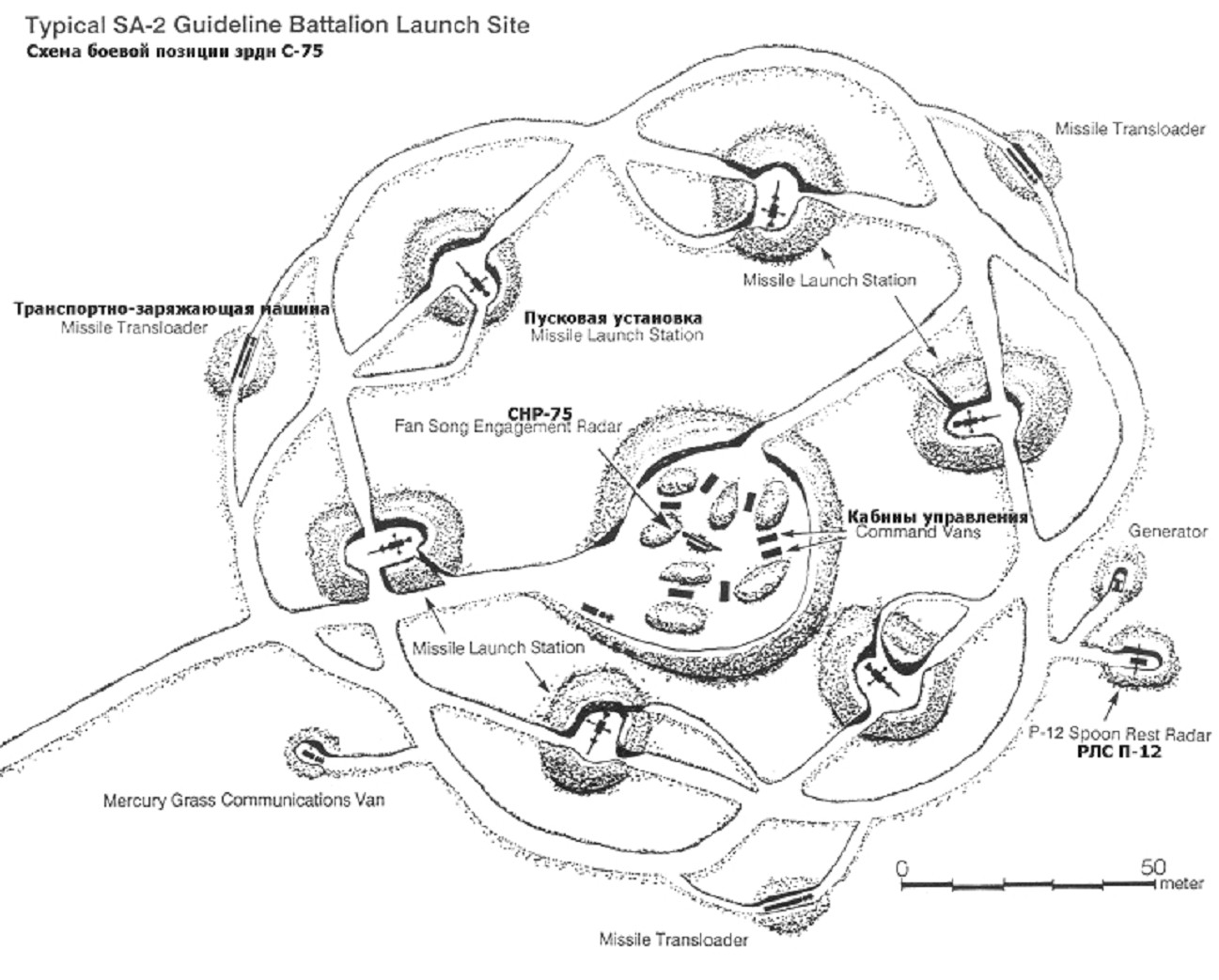
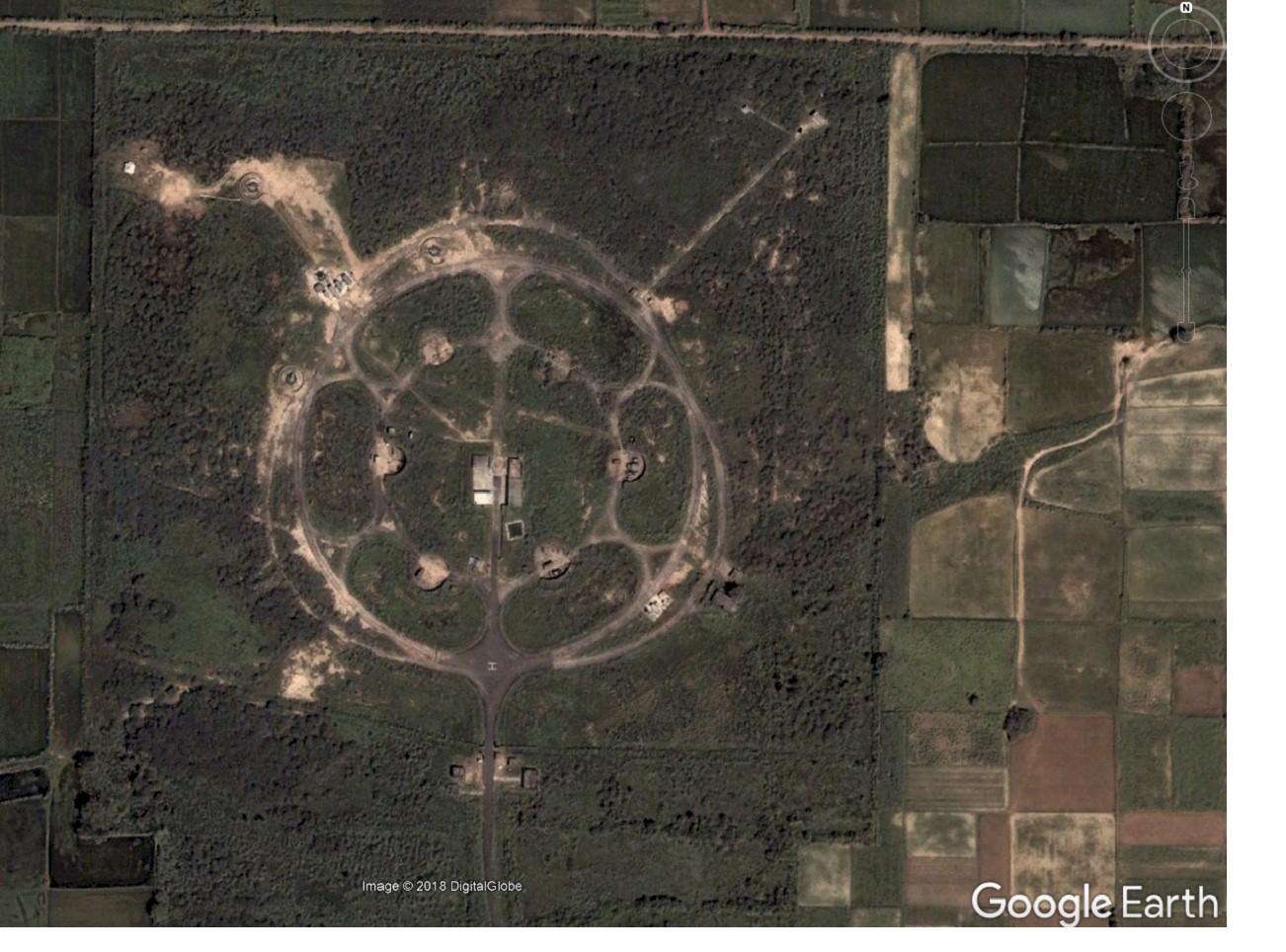
CIA sourced imagery of the SA-2 site at Bawana in NE Delhi. 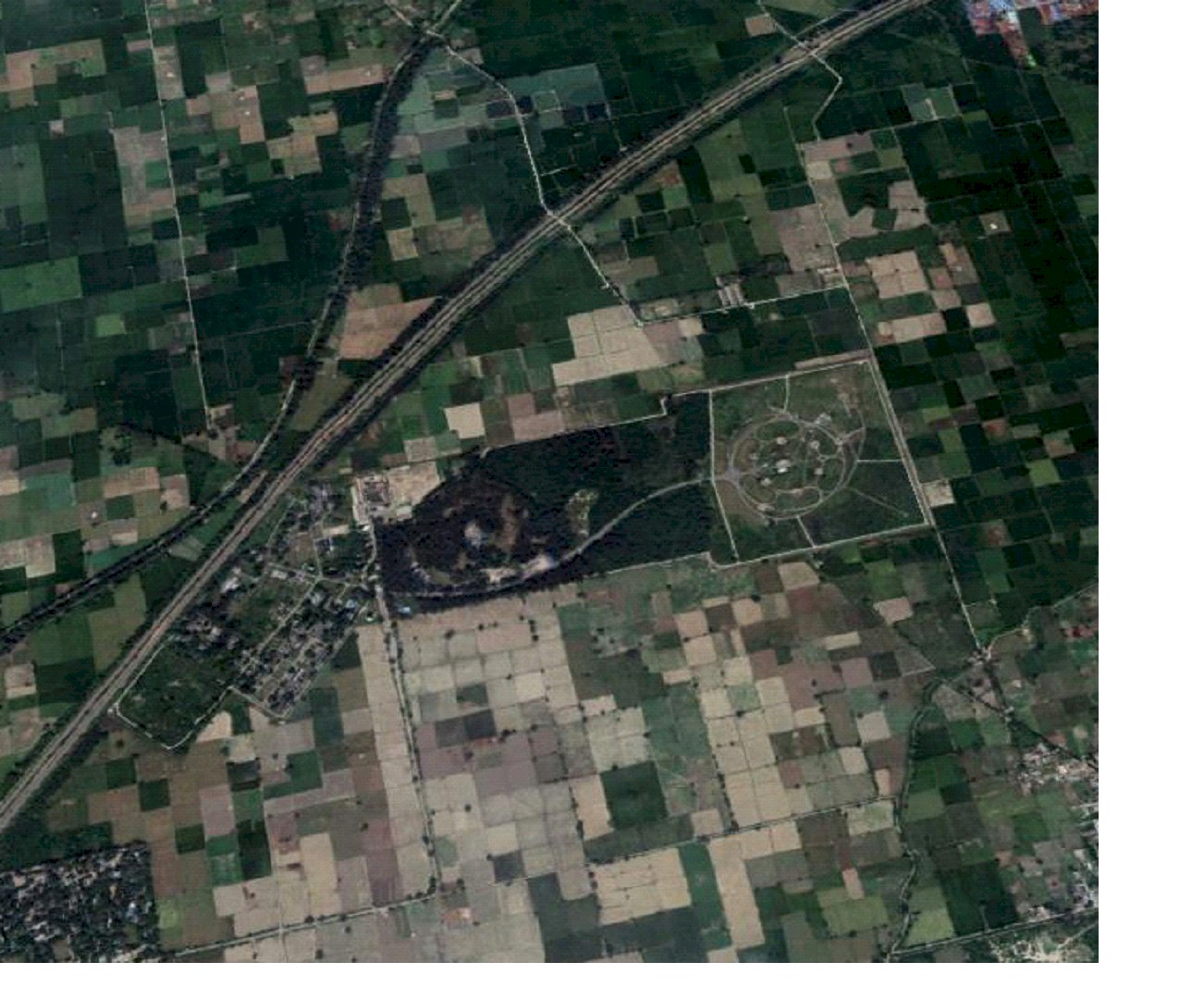
The image on the left is from 1965, whereas the image on the right is from 2017 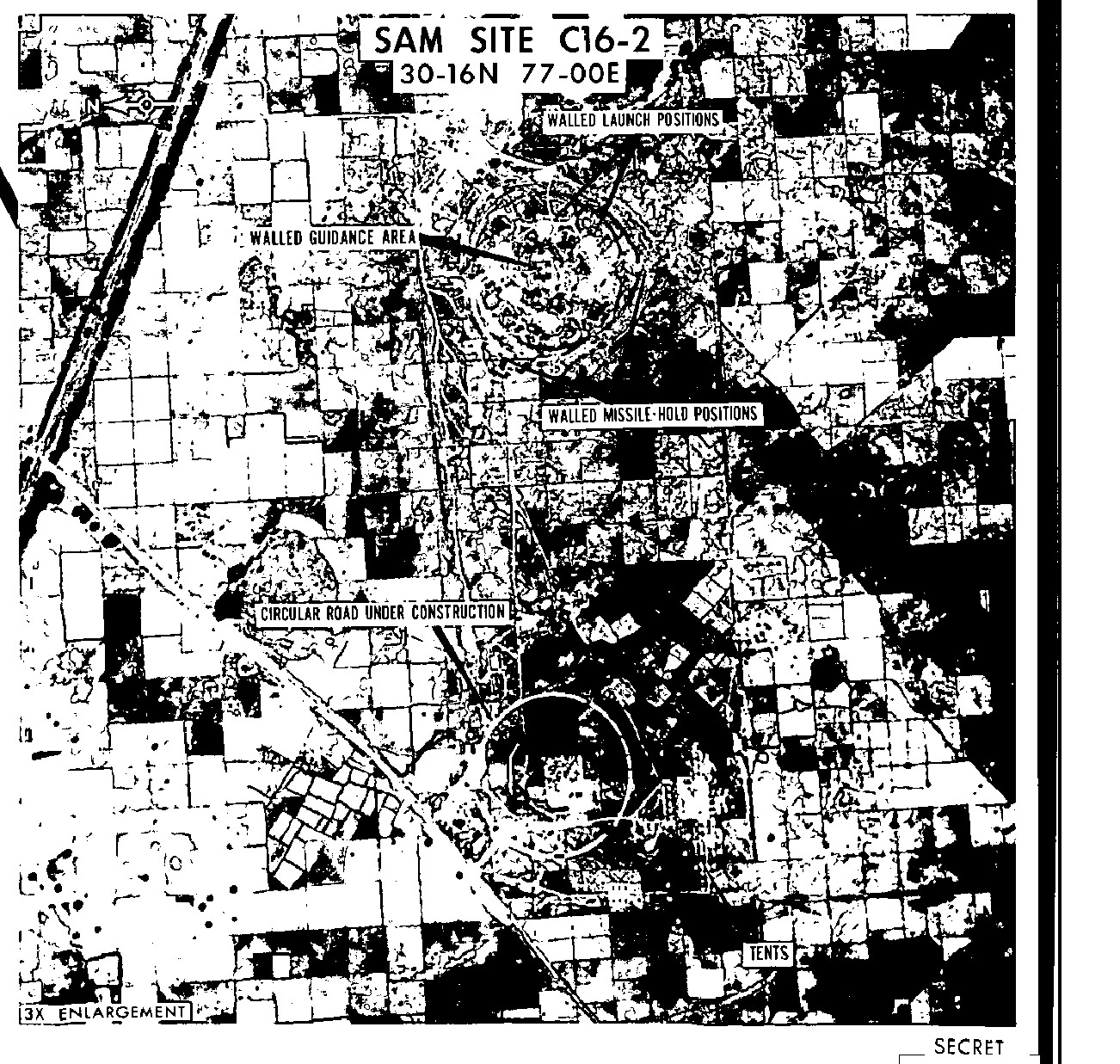
CIA sourced imagery of the SA-2 site at Chandigarh. The image on the left is from around June 1965 
Chandigarh SAM site from 2017
Deployment in the 1965 War
The SA-2 were inducted just in time to be deployed on the frontline during the 1965 conflict. There appears to have been at least two occasions on which the missiles were fired.
On 8 September 1965, one SA-2 was fired against an unidentified target believed to have been on a night mission above Ghaziabad near Delhi. It should be noted that this happened at the height of the paratrooper scare and subsequent news reports gleefully claimed the destruction of a Pakistani C-130 west of Delhi – which turned out to not have any basis. No Pakistani Air Force aircraft ever penetrated as deep as Delhi during the 1965 conflict. The subsequent publication of the photograph of the wreckage in a TV broadcast seemed to indicate that the wreck of the self-destructed missile was shown as the shot down aircraft !
The SA-2s did not get used for the rest of the war. However the next opportunity to deploy it arose within two weeks of the ceasefire.
On 10th October 1965, the PAF sent one of their two RB-57F “Droopy” Canberra Recce aircraft over Ambala, flown by Sqn Ldr Rashid Mir and FgOffr Sultan of No 24 Squadron PAF. The RB-57 could fly at nearly 65,000 feet altitude, much beyond the reach of standard interception altitude of the fighters like the MIG-21 and the Gnat and was thus considered non interceptable.
Somewhere near Amritsar, the aircraft was acquired by the radar of an SA-2 unit and three missiles were launched at the target. The decision to fire three of the missiles was driven by the higher kill probability of launching the salvo in threes. The SA-2 had a 90% kill probability when launched in threes compared to just over 50% when launched in singles. The RB-57F was straddled by the explosion of two of the SA-2s, damaging it badly.
The Pakistani pilot however managed to control the aircraft into an emergency landing at Peshawar. At the last minute the nose gear of the aircraft did not deploy and the aircraft sustained further damage in the landing. It was estimated that the aircraft suffered over 170 holes in the fuselage due to the shrapnel effect of the SA-2 war heads. The RB-57 was returned to the United States for repair and the aircraft remained with the US after that.
In 1965, PAF B-57s carried out steep glide bombing attacks everywhere except at Ambala where, as they suspected that the SA-2 had been deployed, only resorted to low level skip bombing. The era of high altitude bombing raids was a thing of the past. This was acknowledged by the Official PAF Historian, John Fricker :
“Several IAF air bases in the Delhi area were thought to have been defended in 1965 by some of the first SA-2 missiles supplied to India by the Soviet Union, necessitating special tactics involving low level approach. The early SA-2s were only effective at medium and high altitudes, but forced attacking aircraft to operate within the reach of light flak.”[10]
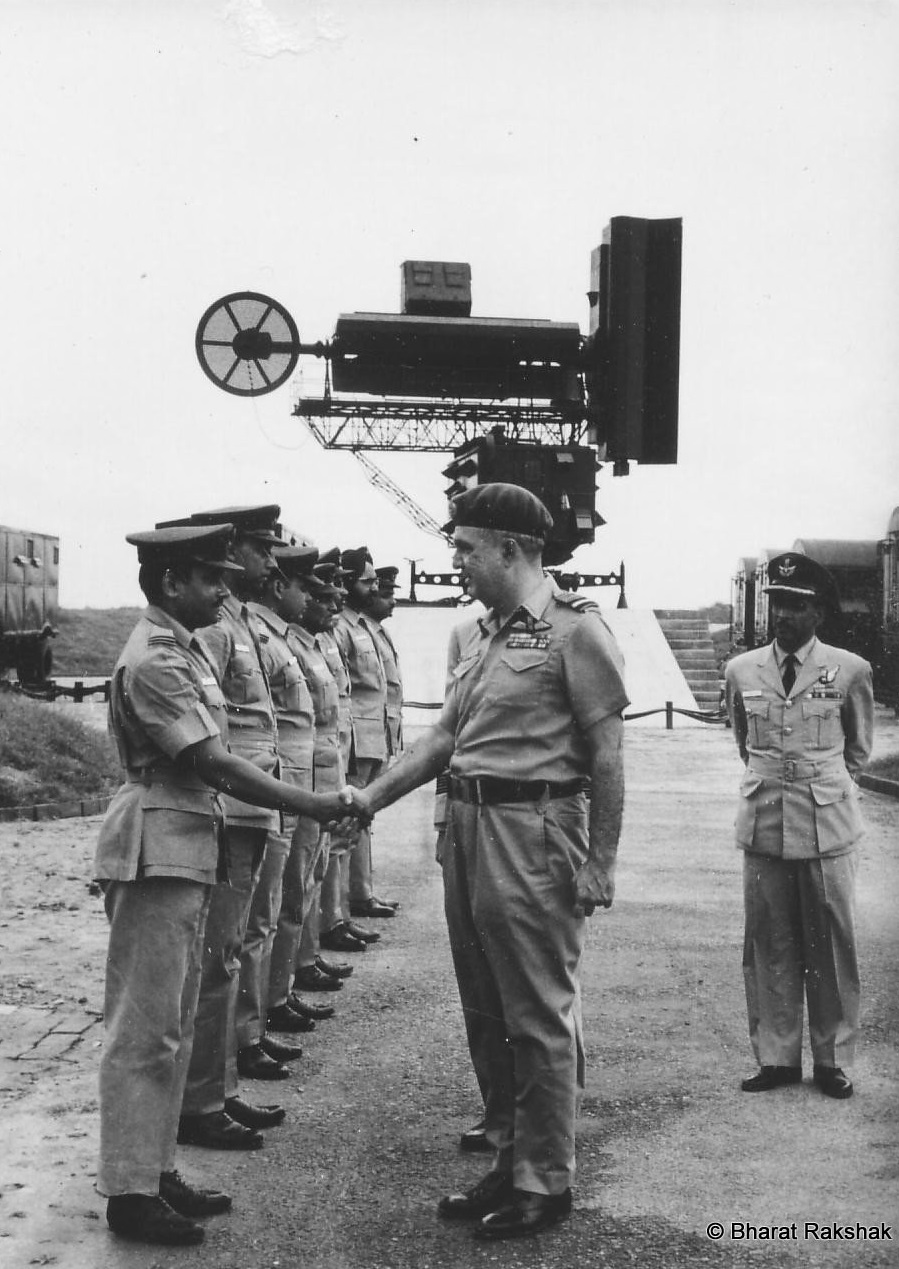
A rare image of the Fansong radar in service from around the 1971 war – Air Marshal Minoo Engineer, AOC-in-C Western Air Command greets the officers and men of a SAGW Squadron. Note the radar has been deployed on a permanent ramp structure. Photo Courtesy : Mrs Farida Engineer.
circa 1969, a S-75 missile being test fired from the missile firing range at AFS Suryalanka, near Bapatla on the eastern coast of Andhra Pradesh. The Missile launcher is obscured by the blast and smoke thrown up by the launch.
1971 War
By the time the 1971 war erupted, India had improved the SA-2’s low-altitude coverage by introducing the Fan Song E radar. It was now capable of guiding missiles at aircraft as low as about 1,000 feet. The missiles were also deployed at Agra, Halwara, Chandigarh and Adampur.
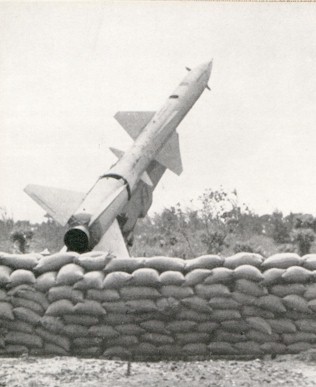
This image of a SA-2 missile in a revetment surrounded by sandbags at a forward airfield dates from the 1971 war.
The SA-2s first saw action over Halwara, on the very first night of the war. Then Wg Cdr T K Sen, the OC Flying of Halwara Air Force Station wrote about that night :
By 23:42 the hostile aircraft entered my defended zone. They obviously had not spotted the airfield. Soon they realized that they had missed the airfield. They turned around and went back to Ludhiana. All this drama was being picked up by all my sensors deployed.
After reaching Ludhiana a second time, the aircraft turned around and followed the canal once again and approached the airfield from the east. …… They continued circumnavigating the airfield and at one stage turned quite hard to align themselves with Runway 13. The first aircraft came overhead at about 20 degrees to the runway and dropped his bombs. He was so low that his bombs did not explode. The L-60 guns opened up and the L-70s followed. The aircraft remained very low, below the missile cover and made a getaway. The second aircraft managed the turn a little better. He was more aligned with the runway, albeit still not quite along it. Just before reaching the circuit zone, he gained a little height to drop his bombs properly. He was successful in his attempt and his bombs dropped and exploded. He had however exposed himself to one of the SA-2 squadrons. Unfortunately for us, the units fumbled a little, and the aircraft exited the kill zone of this unit before the missiles could be launched. In the get away, the intruder turned west and tried to dive low. In this maneuver he exposed himself to the kill zone of the other unit for a very brief while. The unit launched a salvo of three missiles. The intruder was diving hard to get close to the ground, but one of the three missiles exploded on proximity warning. The aircraft disappeared from the missiles radar. The Missile crew was exuberant and wanted to claim a kill. I was unable to accept the claim until the wreckage of the intruder was found and identified.
The claim of firing the missiles went to 64 Squadron under the command of Wg Cdr K M Ponnappa 4503 F(P). The Squadron was deployed right next to the canal near Jagraon village, a few miles from Halwara. Aircraftman George Abraham remembers the incident :
The day of the bombing me, my flight sargeant, Sgt Murthy (the Chief) were in the RMA cabin. Sgt Murthy was awarded Mentioned in Despatch. We fired the salvo. No idea who made the Kill, but PAF never ever tried to bomb halwara again. The ack ack firing and bomb explosion is still in my memory.
The B-57 was being flown by Sqn Ldrs A Basit and Ghulam Ahmed Khan of 7 Sqn PAF out of Mianwali base , and they escaped unscathed.
While the damage to the Halwara airfield was minimal, an accidental explosion of a bomb fuse[11] resulted in the death of Sqn Ldr G K Arora, a Navigator posted to the Missile Squadron at Halwara. Sqn Ldr Arora was later awarded the Shaurya Chakra posthumously.
A second SA-2 firing occurred on the same night, a few hours earlier near Agra. A lone B-57 flew an unprecedented 300 miles into Indian territory to drop bombs on the airfield at around 2030 hours. As the raid winded down, one of the two SA-2 Squadrons (No.74) defending Agra detected a track that was declared hostile. A single SA-2 was fired – with no apparent results. The B-57 escaped unscathed. The same unit fired more missiles the next day morning, on 4th December, at targets that appeared to be balloons. [11a]
A few personnel of the SA-2 squadrons were decorated for the war – an example being Flt Sgt Rattan Lal Mehta, whose citation for a Vishisht Seva Medal (VSM) reads: “Flight Sergeant Rattan Lal Mehta was working in a Surface to Air Guided Weapons Squadron during the Indo-Pak war in December 1971. On 3rd December, 1971 he made the transport loading machine serviceable in the middle of the night by transferring highly inflammable and toxic fuel on the missile tank and loaded the missiles on the launcher for firing in record time. For his devotion to duty in complete disregard to personal safety, and his professional skill of a high order he was awarded the Vishisht Seva Medal.”

A rare look at the refuelling of the second stage of the SA-2 in progress. Refuelling the missile is a hazardous activity – the fuel is extremely corrosive and the airmen are required to wear protective clothing and breathing apparatus. 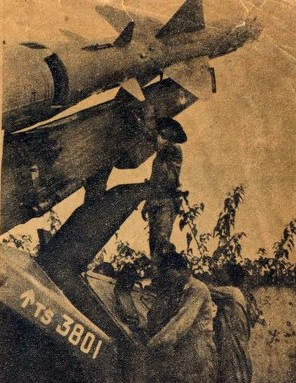
On the right is a missile in a forward deployment area. The missiles have a shelf life of 10 years . Pic Courtesy : Illustrated Weekly of India,
Later in the war, the Pakistanis used decoy balloons in the Punjab area and an unknown number of SA-2 missiles were expended on these decoys [12].The Devil Program
In the 1970s, the DRDL undertook two additional projects. The first, Project Valiant, involved the development of a long-range ballistic missile. The second, Project Devil, was aimed at reverse engineering the Soviet SA-2 surface-to-air missile. Both projects were considered failures and came to be viewed by India’s armed services and the government as competence-building exercises. Project Valiant was terminated in 1974; Project Devil ended in 1980. However, during the period 1972-80, the DRDL developed the infrastructure and facilities to undertake the design and development of missiles. The effort involved reverse engineering the rocket engines used by the SA-2, and the know-how gained helped ISRO’s Space program which included the design of the engines used in the SLV-3 rocket. Later on, the Indian government revived the missile program during the 1980s under the rubric of the Integrated Guided Missile Development Program (IGMDP). The IGMDP was launched in 1983 with the objective of developing five missile systems simultaneously. These resulted in the Prithvi, Agni and Akash missiles that are in use even today.

A trio of SA-2 missiles and launchers on display at Chandigarh during the presidential review. The missiles featured fin flashes on the tails and roundels on the nose cones. 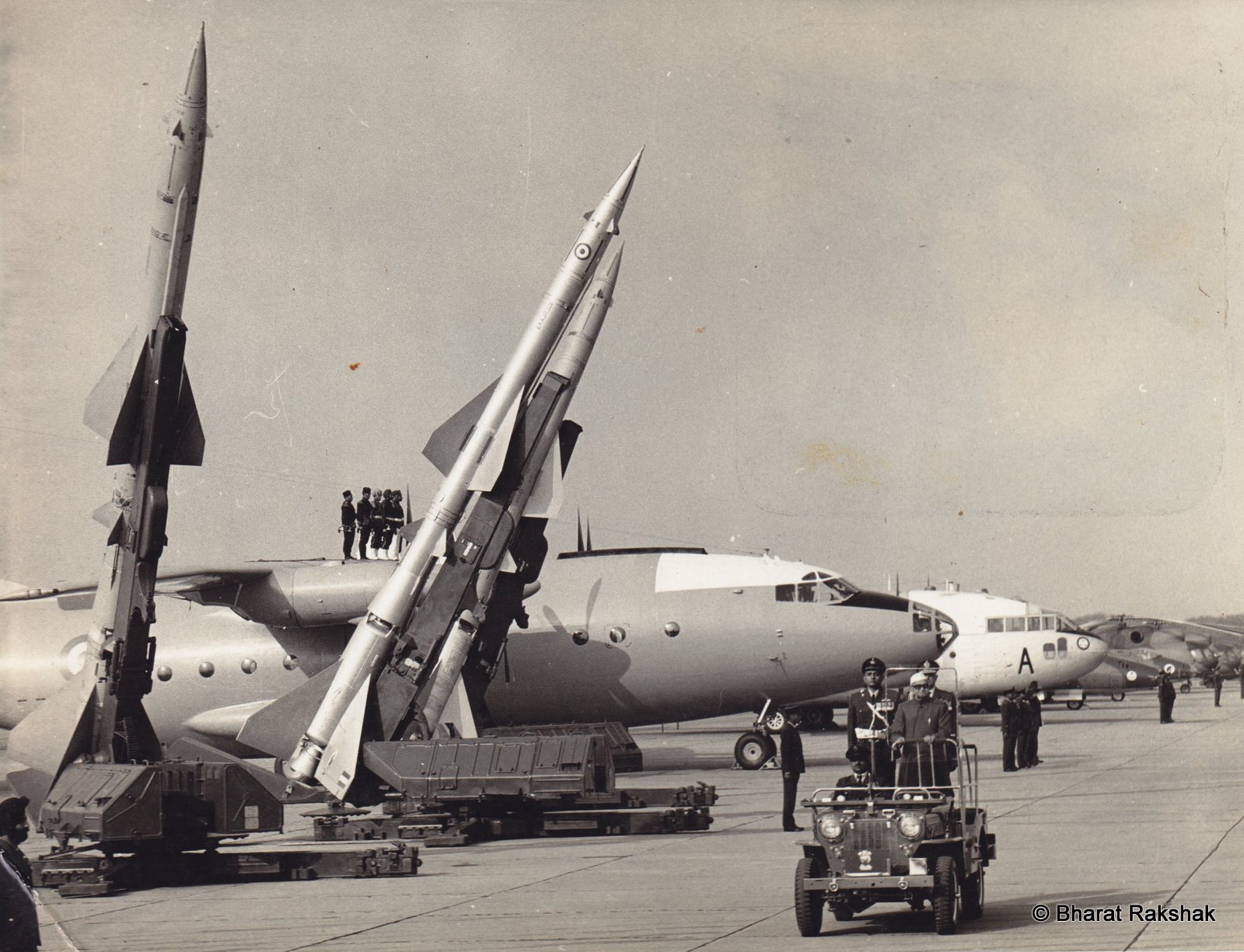
A trio of SA-2 missiles and launchers on display at Chandigarh during the presidential review. The missiles featured fin flashes on the tails and roundels on the nose cones.
Twilight
By the mid eighties , it was clear that the SA-2 system was nearing the end of its utility. The ageing systems were giving the technicians many sleepless nights, and the decreasing reliability of these weapons hastened their phasing out and replacement by the SA-3 Pechora system. The SA-3 was a medium/ low altitude missile launcher and therefore not a true comparable to SA-2. But the threat perception of high altitude bomber missions had waned by the 80s. The last deployment of the SA-2s was during Operation Brasstacks in 1987, when the Indian Army was mobilised along the border for a potential war with Pakistan. After standing down from the operation, the phasing out of the SA-2 units began in earnest.

This photograph of an an active SA-2 launch site dates from 1985 and has been provided by IAF Veteran M S Khurana . Note the Fan Song radar in the background as well as a second SA-2 launcher on the left. Photo Courtesy: M S Khurana
Between September 1964 and 1992 these S-75/SA-2 batteries served for 27 years to protect major strategic targets in the country and were organized across five wings. These were wings dedicated for missile squadrons only with the objective to protect the air space around cities and major defence establishments. The wings and squadrons were disbanded in the late 80s and early 90s, when the SA-3 units (Pechoras) were inducted and started to take over the role. With the SA-3s the need for SAM-only wings was also dispensed with and 24 and 31 Wing were disbanded. 25, 26 and 36 wings acquired the Pechora missiles and 36 Wing also has a flying squadron (11 sqn) now within its lodger units.
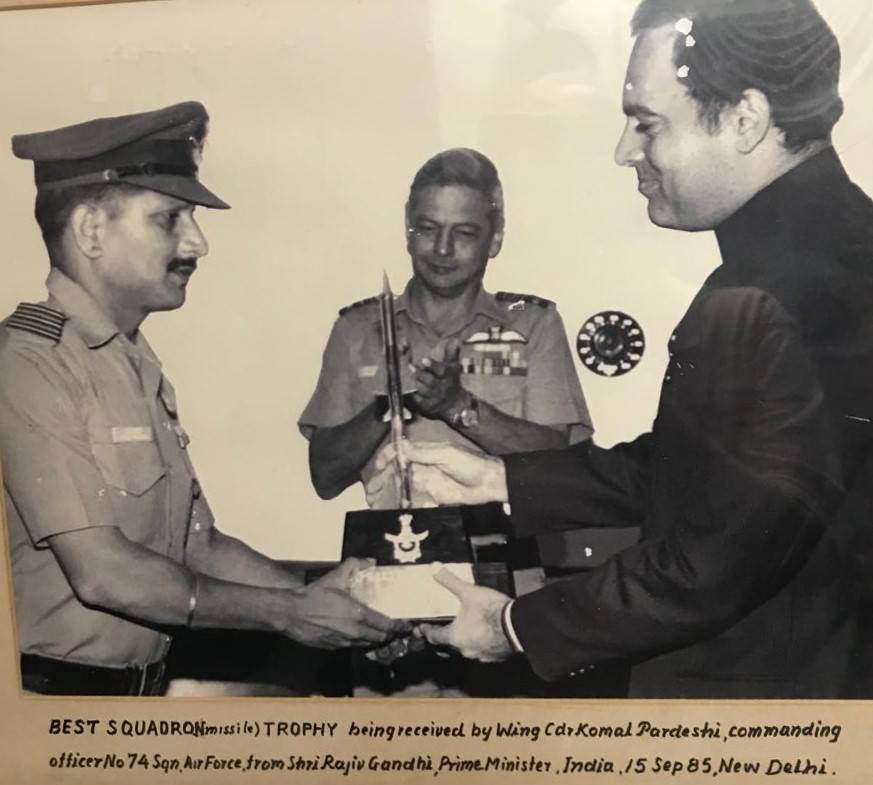
SA-2 Squadron had their own category of trophy – “Best Squadron (Missile)”. This photograph shows the CO of No.74 Squadron, Wg Cdr Komal Pardeshi (9495 F(N)) receiving it in 1985. He was the last CO of the squadron and it was disbanded in 1987.
While Dvina continued to be in service of the nation well past its prime, it was a timely induction in the mid 1960s and contributed to be a major deterrent to PAF during the conflicts at that time. PAF was forced to fly missions at lower altitudes and take more risks with the anti aircraft guns and reduce the accuracy of their weapon deliveries.
The most notable contribution though, came from the knowledge base that India’s missile research establishments got from the experience of the SA-2, and the reverse engineering of the same, which finally led to the various missile and rocket programs in India.

Today, decommissioned SA-2 missile systems can be seen around the country, including the Air Force Academy Dundigal (Top), 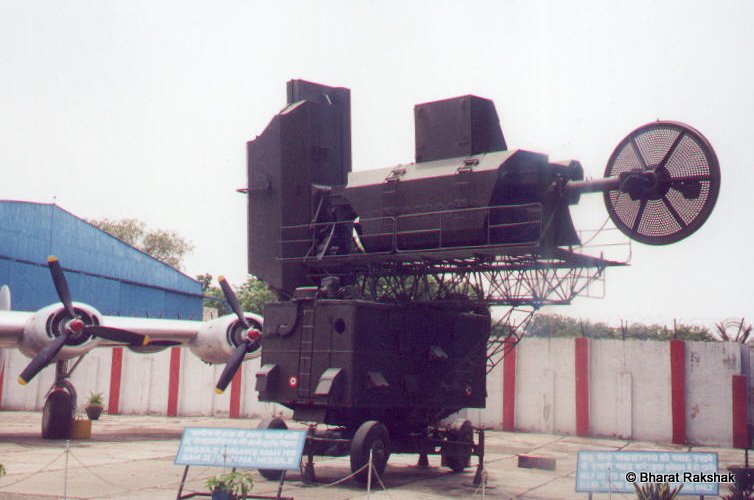
and another missile launcher at the museum in Palam. Other missiles can be seen at the Pragathi Maidan defence pavillion, AFS Rajokri, AFS Chandigarh, GWTI and Maintenance Command HQ in Nagpur. 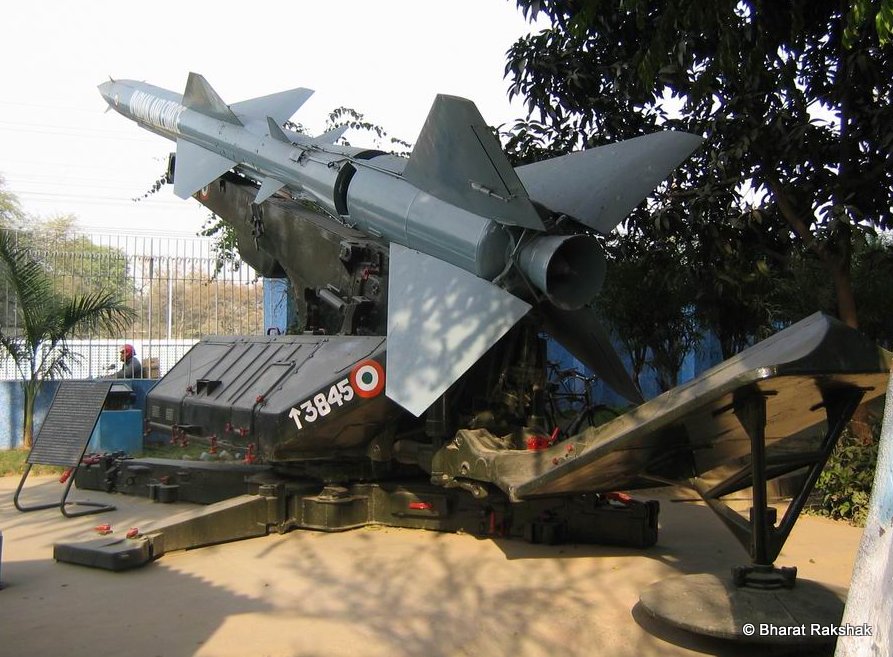
the Fansong radar at the IAF Museum in Palam (Center)
Today, decommissioned SA-2 missile systems can be seen around the country, including the Air Force Academy Dundigal (Top), the Fansong radar at the IAF Museum in Palam (Center) and another missile launcher at the museum in Palam. Other missiles can be seen at the Pragathi Maidan defence pavillion, AFS Rajokri, AFS Chandigarh, GWTI and Maintenance Command HQ in Nagpur.
Foot Notes
[1] Red SAM: the SA-2 Guideline Anti-Aircraft Missile by Steven J Zaloga
[2] S-75/SA-2 Specifications http://www.ausairpower.net/APA-S-75-Volkhov.html [3] S-75/SA-2 Design Features http://www.ausairpower.net/APA-Rus-SAM-Site-Configs-A.html#mozTocId850016
[4] Aircraft of the Indian Air Force, 1933-74, Pushpinder Singh
[5]CIA Document at https://www.cia.gov/library/readingroom/docs/CIA-RDP80T01471R000900050001-8.pdf
[6]CIA Document at https://www.cia.gov/library/readingroom/docs/CIA-RDP84T00864R000100050002-6.pdf Approved For Release 2009/06/12
[7]The SA-2 squadrons were also indigenously modernised to reduce their vulnerability to ECM. The IAF’s waning interest in the DEVIL project stemmed from the not so impressive performance in the 1971 war and they were lobbying with the government to import the newer solid-fuel Pechora (SA-3).
[8] CIA Document at https://www.cia.gov/library/readingroom/docs/CIA-RDP80T01471R000900050001-8.pdf
[9]It is not known when the badge and motto were first authorised by the heraldic committee
[10] Battle for Pakistan: The Air War of 1965 by John Fricker
[11]That thing explodes “https://tkstales.wordpress.com/2010/04/10/hectic-days-in-halwara-6-the-thing-explodes/”
[11a] via LP
[12]My years with the IAF – Air Chief Marshal P C Lal